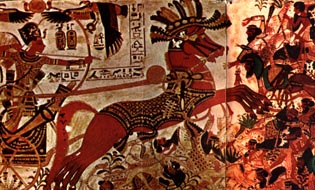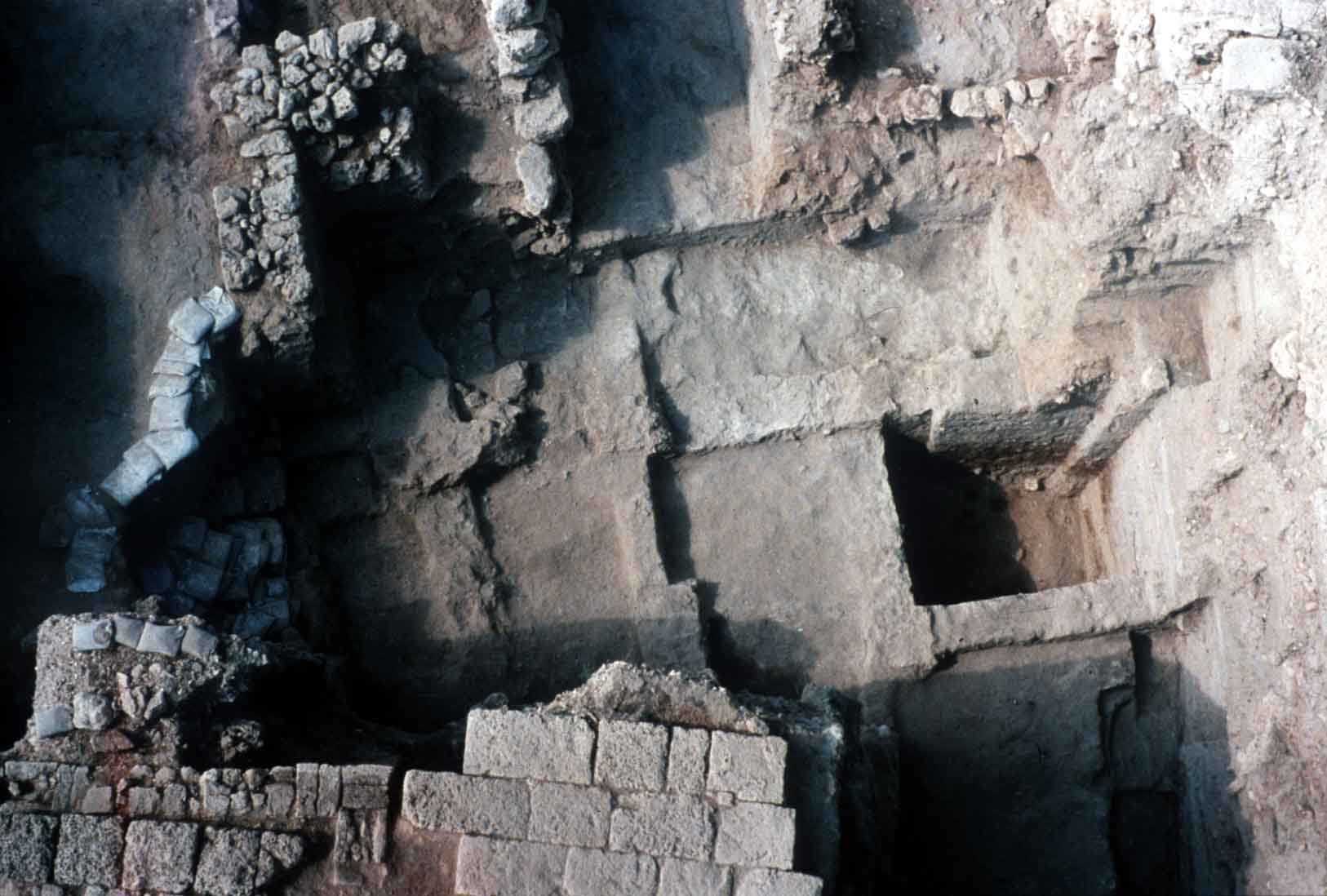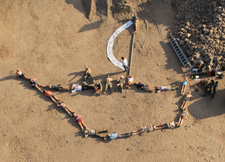The Bronze Age
Historical References
 In the thirteenth century B.C.E., Dor is apparently
mentioned in an Egyptian text of the New Kingdom, as a locale on the
coastal branch of the Via Maris. A letter found at the Late
Bronze Age metropolis of Ugarit mentions certain people named
Šikalayu, "who live on boats". It is possible that these are
the same as the SKL, the inhabitants of Dor in the early Iron
Age.
In the thirteenth century B.C.E., Dor is apparently
mentioned in an Egyptian text of the New Kingdom, as a locale on the
coastal branch of the Via Maris. A letter found at the Late
Bronze Age metropolis of Ugarit mentions certain people named
Šikalayu, "who live on boats". It is possible that these are
the same as the SKL, the inhabitants of Dor in the early Iron
Age.
The transition from the Bronze to the Iron Age in the thirteenth and twelfth centuries B.C.E, is heralded by a crisis of unprecedented magnitude, which hit the ancient civilizations around the Mediterranean, and within decades brought an end to a world order which existed for a millennium. The cause, or causes, of this catastrophe is one of the hotly-debated issues in Near Eastern and Mediterranean archaeology. In Israel, this crisis is manifested by the cessation of three centuries of Egyptian domination, the fall of the Canaanite city-states, the infiltration of pastoral or agrarian tribal societies (Israelites and others) into the highlands, and the onslaught of 'Sea Peoples' on the coasts. The Late Bronze Age city of Dor has not been excavated yet (though we think we know were to locate it…), but large amounts of imported of Cypriot and Mycenaean pottery (in later contexts) provide a first hint regarding its wealth and maritime contacts in this period.
After two centuries of turmoil (the so-called "Dark Ages") there appear three types of polities: territorial states such as Israel, Judah, Amon, Edom and Moab; the Philistine pentapolis; and the Phoenician cities. Excavations at Dor can furnish invaluable evidence as to the origins and fates of at least two of these groups - the Phoenicians and the SKL 'Sea people'.
Archaeological results
Area G

Local phases 11-12: No architecture was found, and the deposits consist mainly of burnt debris - probably industrial wastes.
